Iwagumi
About two years ago, I grew more and more craving to create my own aquascape. Meanwhile, I'm about to realize this dream. I have decided to show this finished project later. First I wanted to explain a little bit what I try to shape. Because I want to try the Iwagumi style for the first time in my life. I am very excited so far and I hope that everything works as I imagine. But first I enlighten you what constitutes an Iwagumi scape.
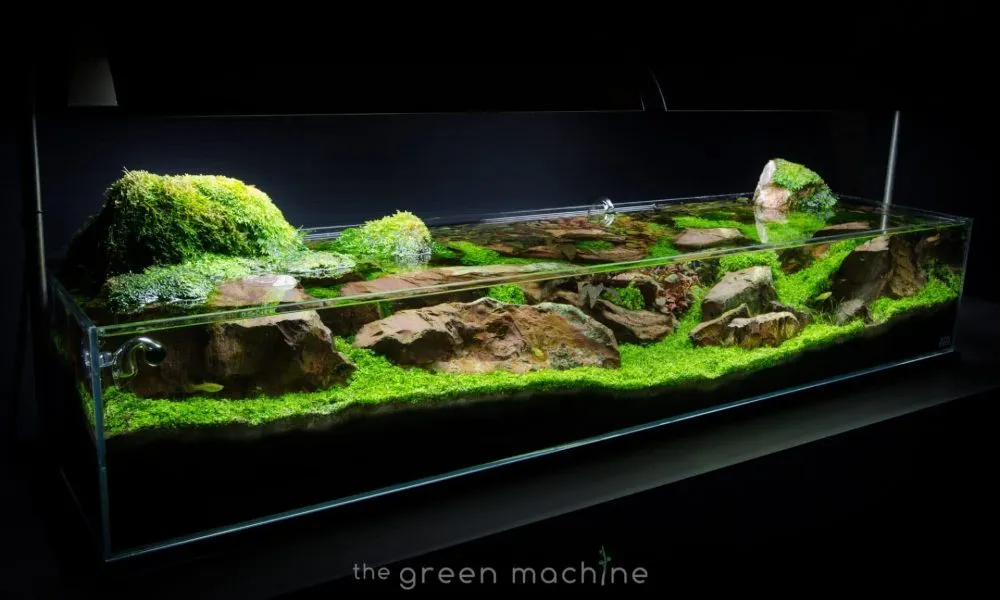
Layouts in the Iwagumi style are a special form in aquascaping, the design of aquarium landscapes. Takashi Amano, the founder of natural aquaristics, created the Iwagumi concept. In doing so, natural rock formations or landscapes are reshaped. Based on the principle of Japanese rockeries, Amano managed to create a particularly natural flow and dynamics through carefully positioned stones in the aquarium. Through his experiences as a wildlife photographer and his ability to observe water flow in nature, he was able to portray these unique and breathtaking scenarios in an aquascape.
Iwagumis are characterized by their puristic design of an aquarium. The basic criterion is to use only one particular type of stone as a decorative element. Roots or woods are omitted in an Iwagumi. Although, of course, water plants are used in such a layout, but the stones represent the main feature. They give the work a special power and charisma. The basic style of Iwagumi "Tanshoku Tanei" translated means "one plant species, one fish species". This means that the aquarium designer, in addition to the exclusive use of stones limited only to a species of water plants and a species of fish. This puristic approach gives an aquascape even more expressiveness. Of course, there are also other interpretations of the Iwagumi style, which also uses different types of aquatic plants and fish. These seem less puristic and a bit more playful and colorful.

Hardscape
Setting up an Iwagumi-style aquarium is quite demanding, as much emphasis is placed on the correct positioning of the stones. To make an Iwagumi seem as natural as possible, you use different sized copies. Even on an even number of stones is waived.
A main stone (first), also called Mainstone or Oyaishi, represents the main attraction in the aquarium layout. This is the largest and most striking stone. The Fukuishi (2nd) is the next smaller stone, which forms a counterpoint to the main stone, so to speak. This means that its orientation interrupts the line of the main stone and thus provides a counterweight. This creates a certain drama. Smaller Soeishi stones (3rd) support the impression of the main stone. The suteishi are the smallest stone elements in an Iwagumi and form the final details in such a design.
Often in an Iwagumi expressive stones are used, which are very ridged or have a pronounced grain. Very popular varieties are for example the Drachenstein or mini landscape. Since the rock is the only striking decorative element, one should pay attention to the harmonious flow in the positioning and surface condition of the stones. By the grain of a stone a certain lines are already given. These should be considered and put together to a harmonious overall concept of all stones.
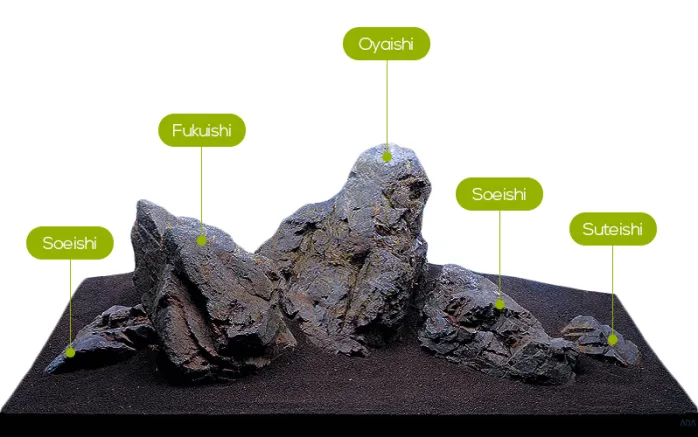
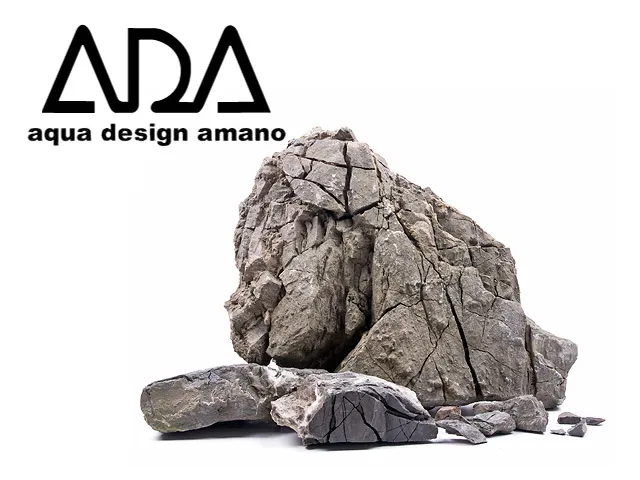
Manten stone
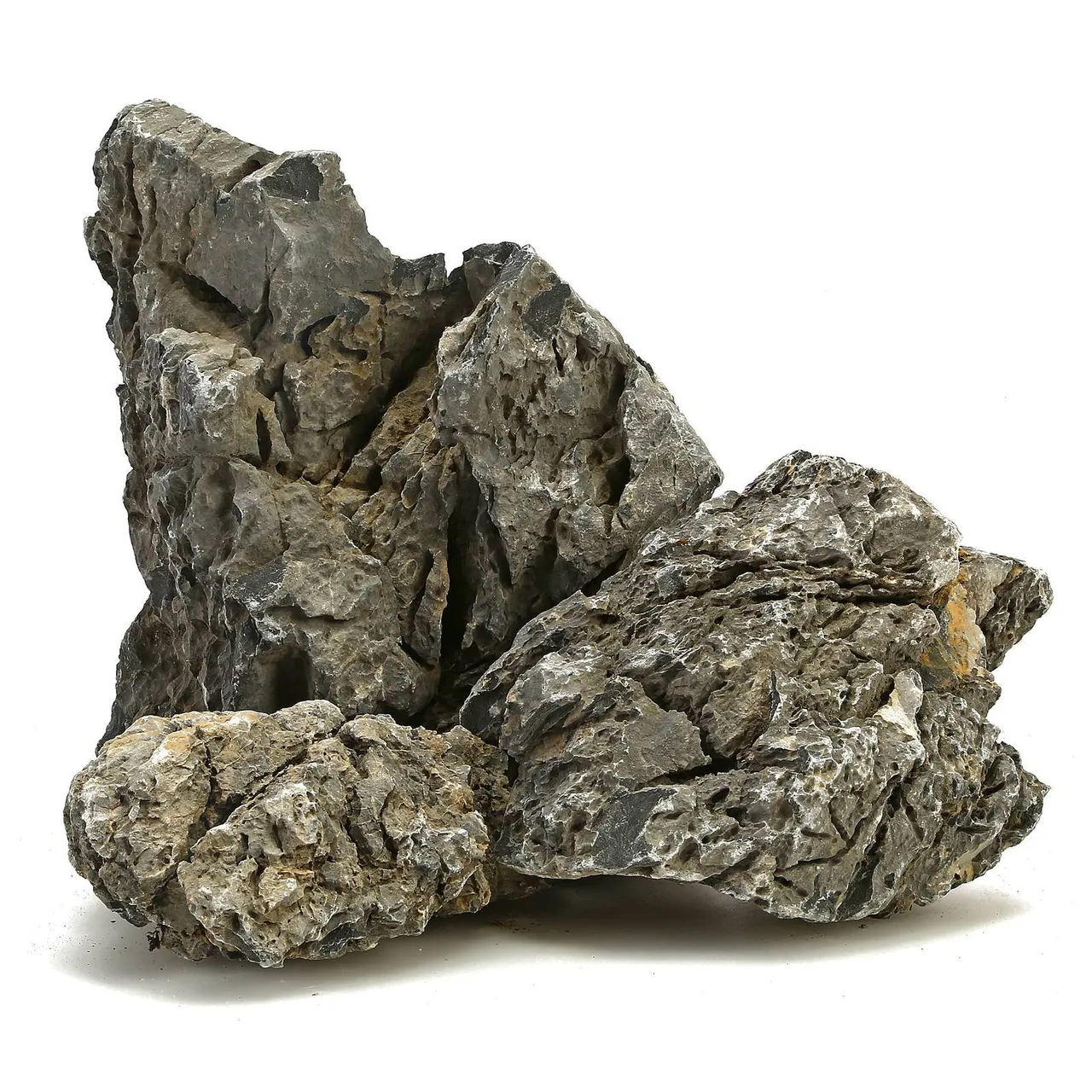
Seiryu stone
Plants
For a typical Iwagumi, only a few aquatic plant species are usually used. Since the overall impression of such a work should be reminiscent of a rocky landscape, ground cover or grassy plants are often used. In order to alleviate the impression of very massive stones as required, classic iwagumis use higher-growing grassy plants in the background, such as Eleocharis vivipara or Vallisneria nana. Of course, stalk plants can also be used in an Iwagumi. Such layouts give a softer and warmer overall impression than purist Iwagumis in the classic sense, especially when redder plants are used.

Glossostigma elatinoides forms a dense carpet

Eleocharis acicularis
Fish
If one sticks to the principle "Tanshoku Tanei" (translates as "one kind of plant, one kind of fish"), one should not select to be mixed up, colorful fish stocking. Of course, the inhabitants should be chosen according to the water values. Very effective and purist would be a stately swarm of a not too hectic species of fish, which in the aquarium majestically can circling. This supports the calm atmosphere of an Iwagumi. Smaller fish species support the size ratio of landscaping in an aquascape.
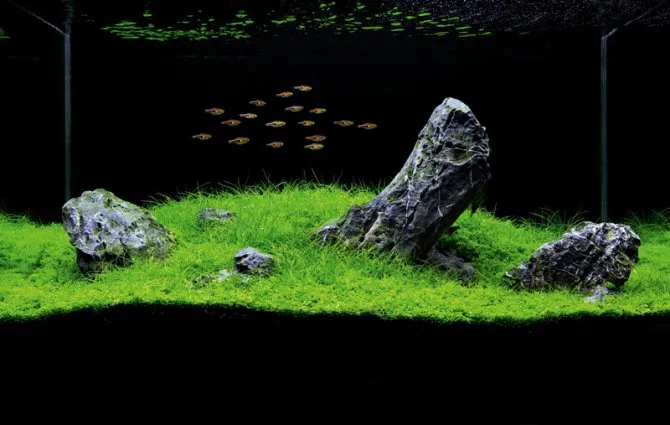
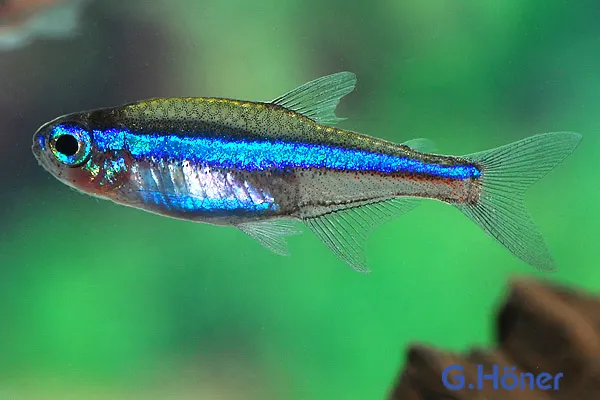
Paracheirodon simulans

Hemigrammus bleheri
I hope you have now a little overview of the topic. Soon I will write something about my current set-up. I'm glad, if I meet here on a few like-minded people.
I wish you all the best!
Marco
If you find any spelling mistakes, you can keep them. :)
Sources:
https://www.practicalfishkeeping.co.uk/features/articles/how-to-set-up-an-iwagumi-aquarium
http://www.tfhmagazine.com/details/articles/creating-the-impression-of-water-flow-in-an-iwagumi-layout.htm
http://aquascapinglove.com/basics/planted-aquarium-hardscape-essentials-part-2-rocks/
https://www.thegreenmachineonline.com/blog/iwagumi-aquascapes-introduction/
http://www.g-hoener.de/index.php/portfolio-items/blauer-neon/
https://www.zierfischzucht-aquakoe.de/Aquaristik/Zierfische/Salmler/Rotkopfsalmler-2-5-3-cm--22.html
https://aquaforestaquarium.com/products/afa-tissue-culture-plant-eleocharis-acicularis-cup-size-short
https://www.flowgrow.de/aquariengestaltung/manten-steine-t16707.html
https://www.aquasabi.de/aquascaping/hardscape/steine/mini-landschaft-seiryu-ryuoh
https://www.aquasabi.de/aquascaping-wiki/aquascaping/iwagumi